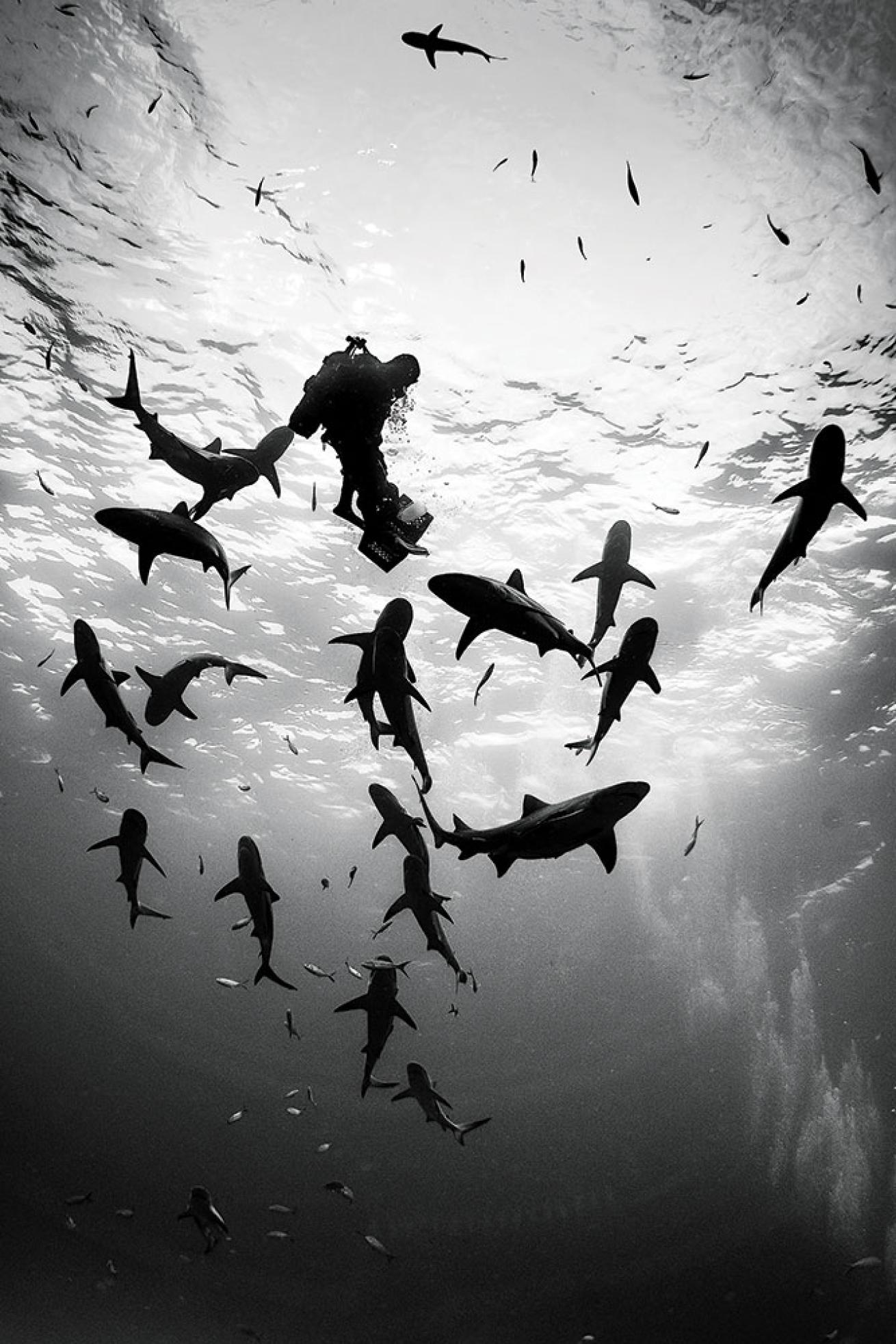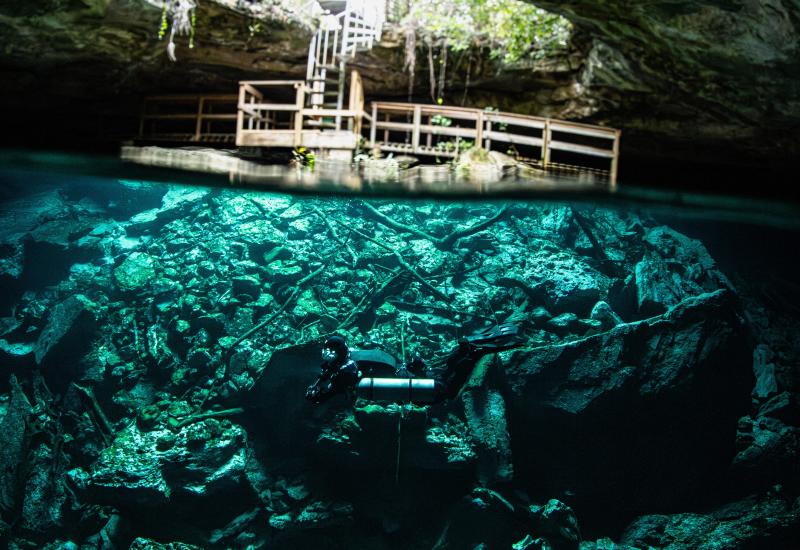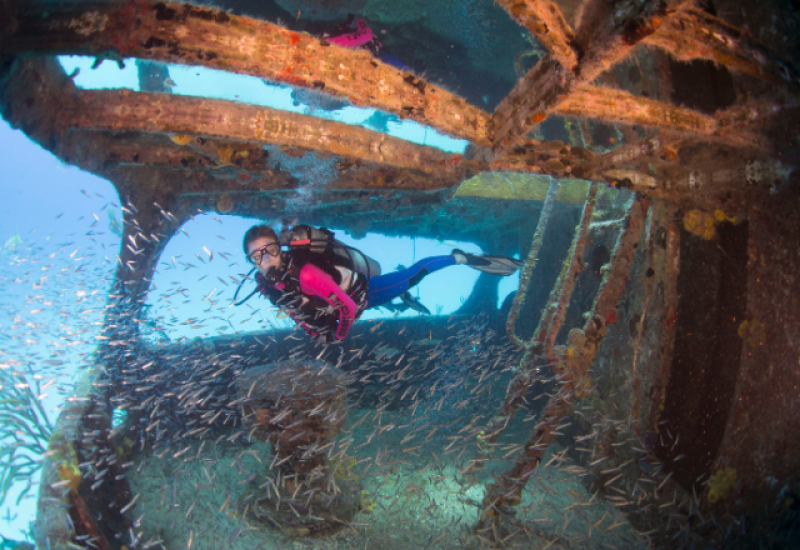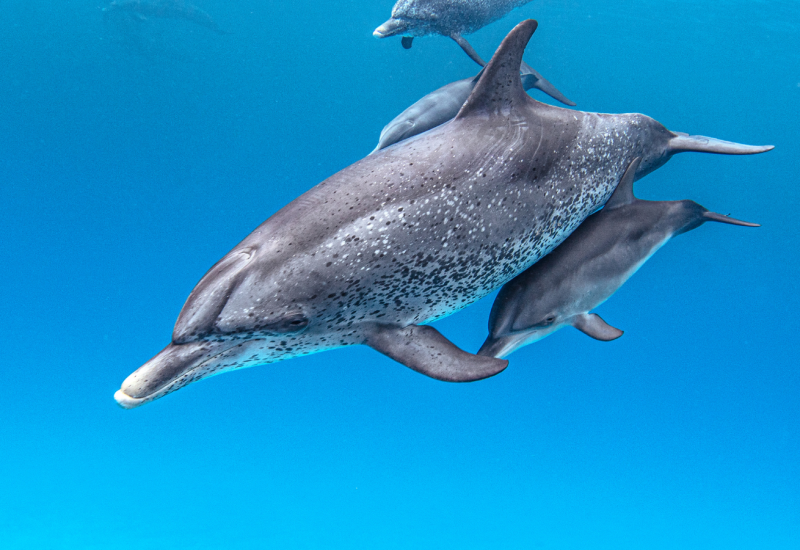Tips for Scuba Diving with Sharks
People think we’re crazy. When the subject of diving with sharks — and the pure, unfettered joy of it — creeps into conversation with the uninitiated, looks of terror, disgust or disbelief typically follow. Despite your most detailed and rational explanation, it’s often impossible to convince the naive, media-hype believers that it’s positively awesome to share the water with these exquisite creatures. The simple fact is those people don’t know what they’re missing.
Shark dives are some of the most coveted experiences in the underwater world. And dive destinations, operators and sites around the world that offer consistent close encounters are among the scuba tribe’s most popular. From Florida to North Carolina, Rhode Island, the Bahamas, Isla Mujeres, South Africa, Fiji, Cocos Island, Fakarava, Isla Guadalupe, the Galapagos and beyond, if there are heaps of sharks in the water, you’ll find divers doing their best to get close. But what are the best practices for getting close to these often skittish and bashful animals?
To discover the secrets of a true shark whisperer, I asked UNEXSO’s Cristina Zenato (unexso.com), a cave explorer, master instructor and educator in Grand Bahama who has been hand feeding and hypnotizing sharks (through tonic immobility) for more than 20 years.
“My babies — the Caribbean reef sharks — are always on the top of my list,” says the Women Divers Hall of Famer of her favorite species. “But I am fascinated by many different species, including the goblin shark and the sevengill, and I have a special place in my heart for the blue shark.”
Here are five things she says to consider before your next encounter.
LEVERAGE LOCAL KNOWLEDGE
Before any dive that involves large numbers or large species of sharks — whether it’s fed, baited or otherwise — Zenato recommends relying on the instructions of the local dive pros rather than basing your plan on what you think you know. “What is an acceptable procedure for one species of shark might be totally inappropriate with another,” she explains. “It’s important to rely on the understanding and knowledge of the professionals who work with the animals on a regular basis.”
BE SELECTIVE WITH OPERATORS
Many of the world’s best shark dives are orchestrated by commercial operators. But before committing your safety and dive dollars, it pays to ask the right questions. “In general I would ask how long they’ve been established and do they have a good safety record,” says Zenato. “Do they have a standard description of what they’re going to do or their rules? And how do they answer your questions and address your concerns?”
DRESS FOR SUCCESS
Most shark-dive operators have specific rules for equipment. Most require full wetsuits and sometimes even black gloves and hoods for pro- tection. According to Zenato: “This is not the place to test a new wetsuit, camera, BC or other equipment. Dive with gear you are comfortable and familiar with so you can enjoy the time with the animals and not worry about anything else.” And about what you’ve heard about sharks being attracted to colors, especially yellow or pink? “They are attracted by contrast more than colors,” she says. “If you’re in a full yellow wetsuit, they’re not going to be attracted to that. But if you’re wearing a black wetsuit with- out black gloves, your white hands will have enough contrast to attract inquisitive attention.”
PRACTICE GLOBAL AWARENESS
Because sharks are such dynamic swimmers, diving with them is a 3-D experience. Strong situational awareness is essential to ensure your safety and enjoyment. “You have to be aware of everything around you
— the sharks, the boat, the current, the other divers, where you’re drifting,” Zenato says. “Pay close attention to instructions, and be ready when it’s time to get out of the water. Furthermore, if you’re a photographer, take your eye away from the viewfinder every once in a while and just look at the whole scene.”
BE AWARE OF BODY LANGUAGE
If you’re lucky (or savvy) enough to encounter sharks in an open-water environment, be mindful of physical cues that can translate their mood or intentions. “There’s a huge difference between an animal that has never been exposed to divers and one that is used to baited dives,” Zenato explains. “A wild animal that is not used to this kind of repetitive in- teraction will have a more natural display. Quick movements such as sudden changes of direction, rapid dropping of the pectoral fins or any other fast action indicates an uncomfortable animal. Also, when the inquisitive nature of some sharks — for example, blue sharks and oceanic whitetips — intrudes on your personal space, it might be time to get out of the water.”
Think you're ready to dive with mako sharks?

Greg LecoeurHow to Play Nice
Here are five tips from a professional shark wrangler.
People think we’re crazy. When the subject of scuba diving with sharks — and the pure, unfettered joy of it — creeps into conversation with the uninitiated, looks of terror, disgust or disbelief typically follow. Despite your most detailed and rational explanation, it’s often impossible to convince the naive, media-hype believers that it’s positively awesome to share the water with these exquisite creatures. The simple fact is those people don’t know what they’re missing.
Shark dives are some of the most coveted experiences in the underwater world. And dive destinations, operators and sites around the world that offer consistent close encounters are among the scuba tribe’s most popular. From Florida to North Carolina, Rhode Island, the Bahamas, Isla Mujeres, South Africa, Fiji, Cocos Island, Fakarava, Isla Guadalupe, the Galapagos and beyond, if there are heaps of sharks in the water, you’ll find divers doing their best to get close. But what are the best practices for getting close to these often skittish and bashful animals?
To discover the secrets of a true shark whisperer, I asked UNEXSO’s Cristina Zenato (unexso.com), a cave explorer, master instructor and educator in Grand Bahama who has been hand feeding sharks for more than 20 years.
“My babies — the Caribbean reef sharks — are always on the top of my list,” says the Women Divers Hall of Famer of her favorite species. “But I am fascinated by many different species, including the goblin shark and the sevengill, and I have a special place in my heart for the blue shark.”
Here are five things she says to consider before your next encounter.
LEVERAGE LOCAL KNOWLEDGE
Before any dive that involves large numbers or large species of sharks — whether it’s fed, baited or otherwise — Zenato recommends relying on the instructions of the local dive pros rather than basing your plan on what you think you know. “What is an acceptable procedure for one species of shark might be totally inappropriate with another,” she explains. “It’s important to rely on the understanding and knowledge of the professionals who work with the animals on a regular basis.”
BE SELECTIVE WITH OPERATORS
Many of the world’s best shark dives are orchestrated by commercial operators. But before committing your safety and dive dollars, it pays to ask the right questions. “In general I would ask how long they’ve been established and do they have a good safety record,” says Zenato. “Do they have a standard description of what they’re going to do or their rules? And how do they answer your questions and address your concerns?”
DRESS FOR SUCCESS
Most shark-dive operators have specific rules for equipment. Most require full wetsuits and sometimes even black gloves and hoods for protection. According to Zenato: “This is not the place to test a new wetsuit, camera, BC or other equipment. Dive with gear you are comfortable and familiar with so you can enjoy the time with the animals and not worry about anything else.” And about what you’ve heard about sharks being attracted to colors, especially yellow or pink? “They are attracted by contrast more than colors,” she says. “If you’re in a full yellow wetsuit, they’re not going to be attracted to that. But if you’re wearing a black wetsuit without black gloves, your white hands will have enough contrast to attract inquisitive attention.”
PRACTICE GLOBAL AWARENESS
Because sharks are such dynamic swimmers, diving with them is a 3-D experience. Strong situational awareness is essential to ensure your safety and enjoyment. “You have to be aware of everything around you — the sharks, the boat, the current, the other divers, where you’re drifting,” Zenato says. “Pay close attention to instructions, and be ready when it’s time to get out of the water. Furthermore, if you’re a photographer, take your eye away from the viewfinder every once in a while and just look at the whole scene.”
BE AWARE OF BODY LANGUAGE
If you’re lucky (or savvy) enough to encounter sharks in an open-water environment, be mindful of physical cues that can translate their mood or intentions. “There’s a huge difference between an animal that has never been exposed to divers and one that is used to baited dives,” Zenato explains. “A wild animal that is not used to this kind of repetitive interaction will have a more natural display. Quick movements such as sudden changes of direction, rapid dropping of the pectoral fins or any other fast action indicates an uncomfortable animal. Also, when the inquisitive nature of some sharks — for example, blue sharks and oceanic whitetips — intrudes on your personal space, it might be time to get out of the water.”










